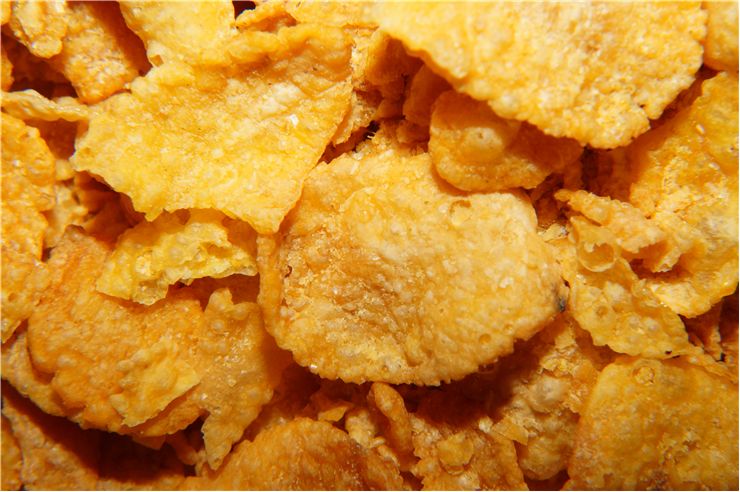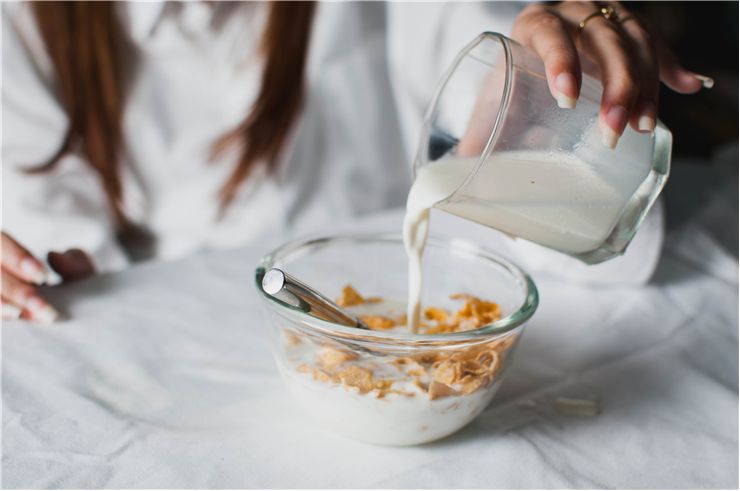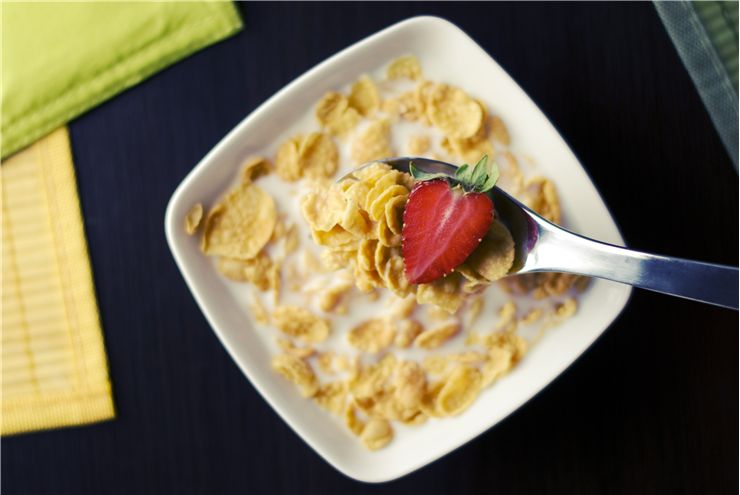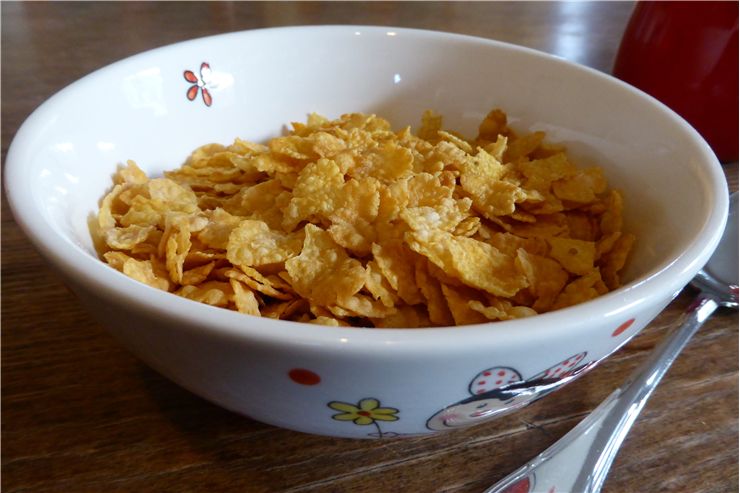Corn Flakes History - Who invented Corn Flakes?
Corn flakes are breakfast cereals made of milled corn, malt flavoring and sugar. They are one of the earliest breakfast cereals and one of the first to be commercially successful.
Corn flakes, like many things in human history, were invented by accident. Seventh-day Adventists in Battle Creek, Michigan tried at the end of 19th century to develop food that would be more according to their beliefs. The experimented with different grains, including wheat, oats, rice, barley, and corn among other vegetarian food. Dr. John Harvey Kellogg, Adventist himself, used their findings in The Battle Creek Sanitarium in Michigan, where he was a superintendent, as a basis for diet for his patients. He was a follower of Sylvester Graham (who invented graham crackers and graham bread) and he believed that strong food (like spicy and sweet food) would increase passions and passions are sins according to Seventh-day Adventists. Because of that, food that he prepared in Sanitarium for his patients was bland.
Experimenting with cooked wheat, John and his brother Will, left the wheat to sit for a longer time. When they returned they found that it went stale but because they couldn't allow themselves to throw it away because they were low with money they continued experiment. They forced the cooked wheat through rollers in hope that they will get long sheets of the dough. What they got were flakes which they then toasted and served to their patients. Patients liked it and the flakes became very popular in Sanatorium. Brothers filed the patent for "Flaked Cereals and Process of Preparing Same" on May 31, 1895, and received it on April 14, 1896. After that they continued experimenting with other grains. Mass-marketing of this new meal began in 1906. Will, which was a business manager of the sanitarium and owner of Battle Creek Toasted Corn Flake Company started adding sugar to corn flakes which his older brother didn't like because it stood against what he believed in. Next method of boosting the sales that Will tried was offering the “Funny Jungleland Moving Pictures Booklet” for every two boxes of Corn flakes and 10 cents. This was the first prize used for selling the cereals and this offer lasted 23 years. Kellogg flakes also had the first mascot – green rooster named Cornelius (Corny) Rooster which is still one of the Kellogg's mascots. He was suggested by Kellogg family friend Nansi Richards, which was a harpist from Wales and a Welsh language proponent because the cockerel in Welsh is “ceiliog” which is pronounced like Kellogg.
C. W. Post was a former patient of The Battle Creek Sanitarium which founded a rival company. This company was called Postum Cereal Company and it produced one of the major rival corn flakes in United States called “Post Toasties” (known before that as “Elijah's Manna” until an angry clergymen protested the name). Corn flakes didn't stay on the North American continent. Australia's Sanitarium made their own brand of corn flakes called “Skippy corn flakes”. Sainsbury's, Tesco, Morrisons, and Asda Co-operative are only some of the many manufacturers that have their own versions of corn flakes.
Corn flakes have sugar in them and can be bad for health if eaten in larger quantities. They also don't have much fiber but if they are eaten with fruit, fiber can be compensated. They have high quantities of iron which is used for production of myoglobin and hemoglobin and which in turn carry oxygen through the blood to the cells. Vitamins are destroyed during the processing so a lot of corn flakes are enriched with vitamins and minerals.



